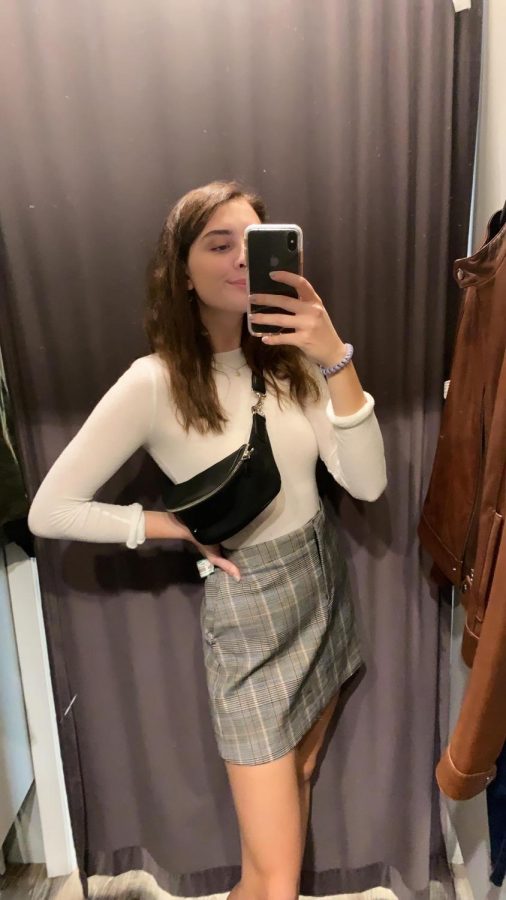The Real Cost of Fast Fashion
Can We Slow it Down?
A genuine leather jacket, wool mini skirt, and fanny pack turned out close to $50 at a second hand store.
December 11, 2019
With new fashion trends popping up every season, the term “fast-fashion” has grown too. Generally, companies identify trends from the catwalk or celebrity fashion and quickly mass-produce them. Cheaply made, these trends appeal to buyers who can easily match current styles at a low price. Fast fashion is especially popular in stores such as Wet Seal, Forever 21, and Zaful. Companies capitalize on new “vogue,” and their quick and cheap production means poorly made, but low priced and trendy clothes that appeal to a massive audience. Unfortunately, both consumers and producers fail to realize the tremendous impact of fast fashion socially, economically, and environmentally.
Fast fashion is a generally new concept. Prior to the 21st century, most companies went through a production cycle only four times a year. With such limited collections, clothes were generally more expensive and marketed to a more privileged audience. With the rise of industry and media, fast fashion found its natural place. In order to quickly turn out new clothes, many well-known companies sacrifice quality and product control for a profit. Truthfully, pieces from Zara, H&M, and Forever 21 are not designed to last. Instead, pieces are urgently made to sell and generate a profit, all for the buyer to throw the garment away after a few wears. Gone are the days when an item of clothing is kept for years on end; besides only appealing to the “in” trends that quickly fade, these clothes simply do not last long.
Fast Fashion has an undeniable effect. The low-quality materials seriously harm the environment. Fast fashion companies use harmful chemicals that seep into waterways. This is most obviously a problem in some developing or disadvantaged nations where dangerous dyes are used to make the clothes. However, the problem does not end with production; washing the clothes at home can spread chemicals into our own ecosystems. Then, these clothing pieces, as they are not made to last, quickly end up thrown away, adding to the problem of waste. In addition, the factory workers face health and safety concerns making the clothes. Many factory workers barely make a living wage when mass-producing clothes that sell cheaply.
Counteracting the rise of fast fashion is sustainable fashion, which revolves around eco-conscious and ethical clothing. While offering an alternative to fast fashion, sustainable fashion also looks to bring awareness to the problems permeating the industry. Both producers and consumers need to actively try to fix the social, economic, and environmental issues that fast fashion openly invites. Sustainable fashion choices include thrift shopping, using garments for a long time, and purposefully shopping at ethically friendly places. A great place that I shop at is Designer Consigner in Hockessin, Delaware, which offers popular, second hand clothes in pristine condition. I personally like to buy a couple pieces I know I will wear for a long time instead of a large haul. That way, I know I am being economically and environmentally conscious. Another option is donating old clothes instead of throwing them away. Overall, buyers should look to buy fewer clothes, and the ones they do should be higher quality and able to last a long time. Perhaps we in the Archmere community can be more reflective as consumers.

















